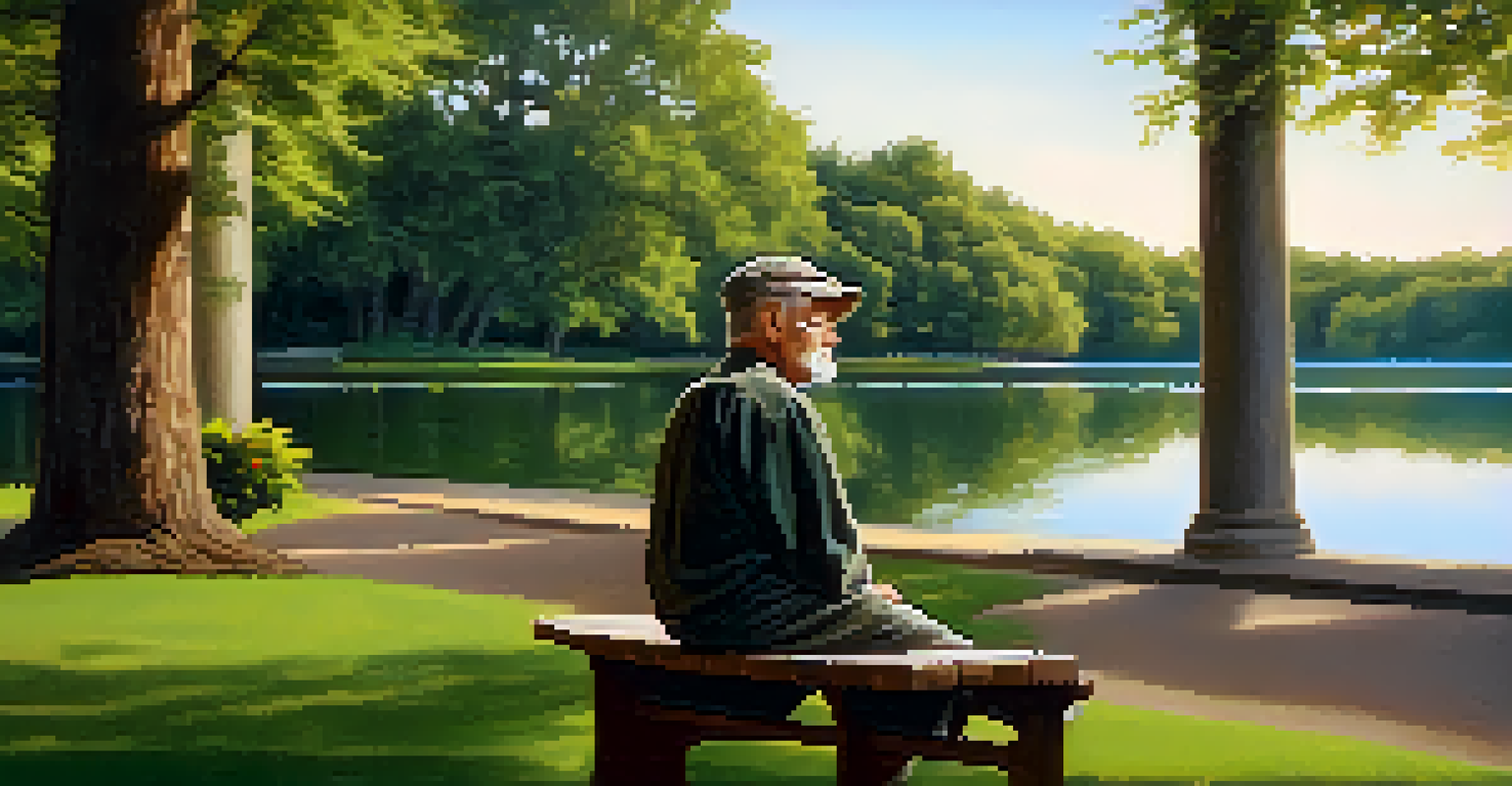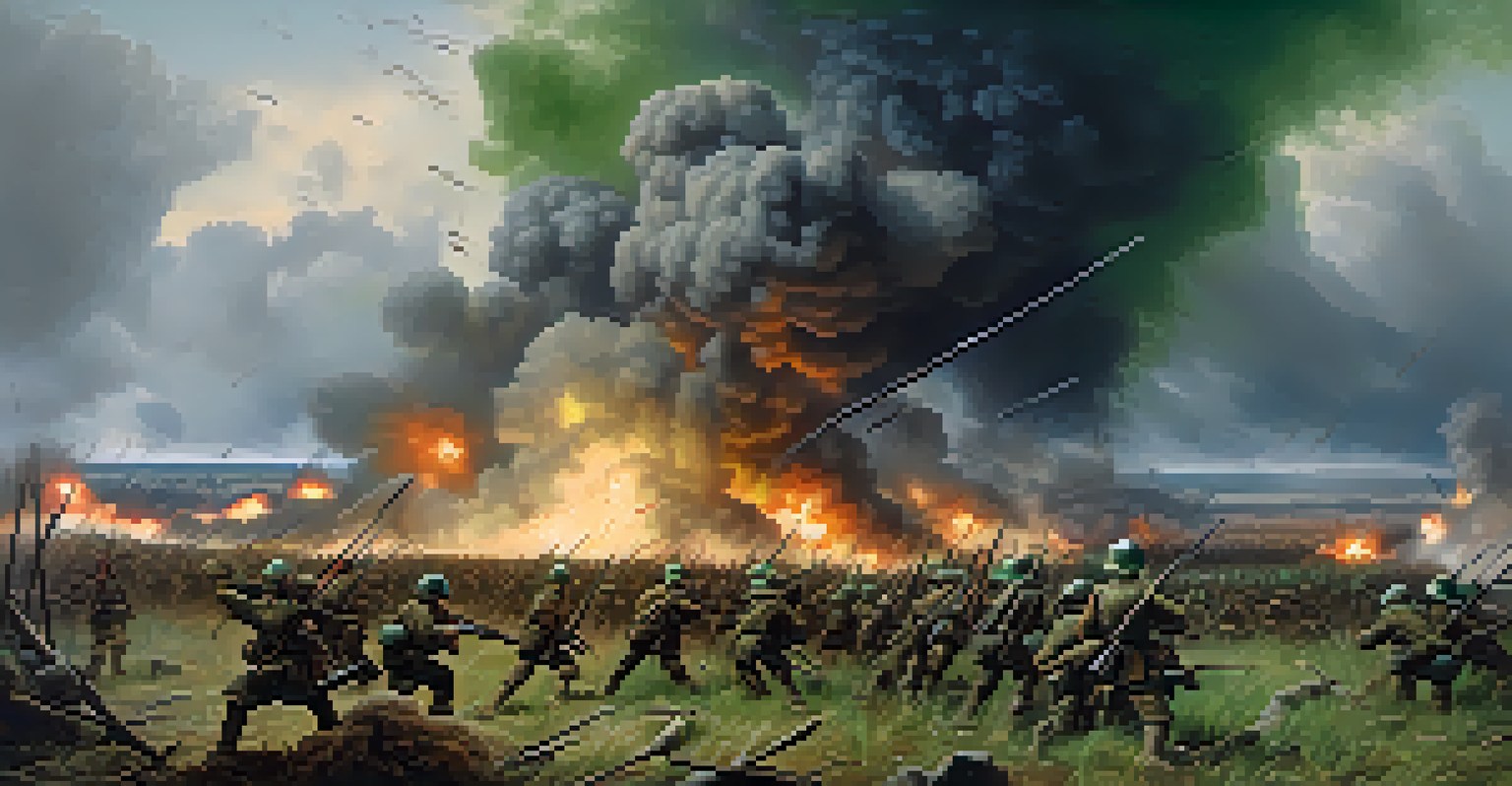War Movies: Propaganda or Genuine Representation?

Understanding the Role of War Movies in Society
War movies have long been a powerful tool in shaping public perception of conflict. They not only entertain but also serve as a medium to convey national narratives. Often, these films reflect the values and ideologies prevalent in society at the time of their release, making them significant cultural artifacts.
War is a mere continuation of politics by other means.
For instance, during World War II, films like 'Casablanca' and 'The Best Years of Our Lives' were created to boost morale and reinforce patriotism among audiences. This illustrates how war cinema can act as a form of propaganda, encouraging support for military efforts. However, the impact of these films goes beyond mere entertainment, affecting how generations view war.
As we analyze war movies, it's essential to recognize their dual role. They can both glorify action and depict the harsh realities of war, offering viewers a complex understanding of conflict. This makes them a unique lens through which to examine historical and social issues.
The Concept of Propaganda in War Films
Propaganda in war films aims to shape public opinion and promote a specific agenda. Filmmakers often emphasize heroism and sacrifice, which can create an oversimplified view of war. This approach can lead to a romanticized narrative that overlooks the chaos and moral ambiguities inherent in conflict.

Take, for example, 'American Sniper,' which highlights the valor of a Navy SEAL sniper. While the film portrays his courage, it also raises questions about the ethical implications of warfare. Such films can influence viewers’ feelings towards military actions, sometimes blurring the lines between entertainment and ideology.
War Movies Shape Public Perception
War films not only entertain but also influence societal views on conflict, often reflecting contemporary values and ideologies.
Understanding the role of propaganda in these films is crucial. By recognizing the intended messages, audiences can better appreciate the complexities of the narratives presented. This awareness fosters critical thinking about the portrayal of war in popular culture.
Authentic Representations of War in Cinema
Despite the prevalence of propaganda, many war films strive for authenticity, aiming to depict the gritty realities of conflict. Movies like 'Saving Private Ryan' and 'Full Metal Jacket' are often lauded for their unflinching portrayals of battle. These films immerse viewers in the chaos and horror of war, prompting a more profound emotional response.
The first casualty when war comes is truth.
Authentic representations can serve to honor those who have served, shedding light on their experiences and sacrifices. By focusing on the human element, these films often evoke empathy and understanding, rather than glorifying the act of war itself. This approach can provoke important conversations about the consequences of conflict.
Moreover, authenticity in war films can challenge audiences to confront uncomfortable truths. By depicting the struggles of soldiers and civilians alike, filmmakers can encourage viewers to reflect on the broader implications of war, making these narratives more impactful.
The Impact of Historical Context on War Films
The historical context in which a war film is produced significantly influences its narrative and message. Films created during or immediately after a conflict often carry the weight of contemporary sentiments. For instance, Vietnam War films like 'Apocalypse Now' were shaped by the intense public backlash against the war, leading to more critical portrayals.
In contrast, films made years later may adopt a more reflective or romanticized view of the same conflicts. This can skew the audience's understanding of historical events, depending on when the film is released. The evolving nature of historical interpretation plays a crucial role in how these narratives are constructed.
Propaganda vs. Authenticity in Film
While some war films serve as propaganda, others strive for authenticity, portraying the harsh realities and emotional toll of conflict.
By examining the historical context, we gain insights into how societal attitudes shape the portrayal of war. This understanding allows audiences to appreciate the layers of meaning behind the films and the ways in which they resonate with or challenge prevailing narratives.
The Role of Filmmakers in Shaping War Narratives
Filmmakers play a pivotal role in crafting the narratives presented in war movies. Their choices regarding storytelling, character development, and visual representation can either reinforce or challenge existing perceptions of conflict. Directors and writers often draw from their own experiences or research to shape the authenticity of the story.
For instance, directors like Steven Spielberg and Oliver Stone have produced films that provoke thought and discussion about the moral complexities of war. Their works often reflect a deeper understanding of the human experience, rather than simply glorifying military actions. This nuanced approach can lead to more meaningful portrayals of conflict.
Ultimately, the artistic vision of filmmakers shapes how war is represented on screen. By being mindful of their influence, audiences can better appreciate the stories being told and the messages embedded within them.
Audience Reception: How Viewers Interpret War Films
Audience reception plays a crucial role in how war films are understood and interpreted. Viewers bring their own experiences, beliefs, and emotions to the cinema, which can significantly influence their perception of the film's message. This subjectivity means that a single film can resonate differently with various audiences.
For instance, a viewer with military experience may perceive the authenticity of a war film differently than someone without that background. This can lead to diverse interpretations of the same narrative, highlighting the importance of discussion around these themes. Engaging in conversations about war films can foster understanding and empathy among viewers.
Audience Influence on War Narratives
Viewers' personal experiences and beliefs significantly shape their interpretation of war films, leading to diverse perspectives on the depicted narratives.
Moreover, audience reactions can shape future filmmaking trends. As viewers express their opinions on social media and in reviews, filmmakers may adjust their approaches in response to public sentiment. This dynamic relationship between creators and audiences underscores the evolving nature of war narratives in cinema.
The Future of War Movies: Trends and Predictions
As society evolves, so too does the portrayal of war in cinema. Current trends suggest a growing interest in exploring the psychological effects of war on soldiers and civilians, moving beyond traditional battle depictions. Films like 'The Hurt Locker' and '1917' delve into the emotional toll of conflict, offering a more comprehensive view of war's impact.
Additionally, advancements in technology and storytelling techniques allow filmmakers to create more immersive experiences. Virtual reality and interactive narratives could revolutionize how audiences engage with war stories, making them feel more connected to the experiences depicted on screen. This shift could enhance empathy and understanding.

Looking ahead, the challenge remains for filmmakers to balance authenticity with the responsibility of representation. As new generations of storytellers emerge, they will continue to shape the narratives surrounding war, prompting ongoing discussions about the fine line between propaganda and genuine representation.